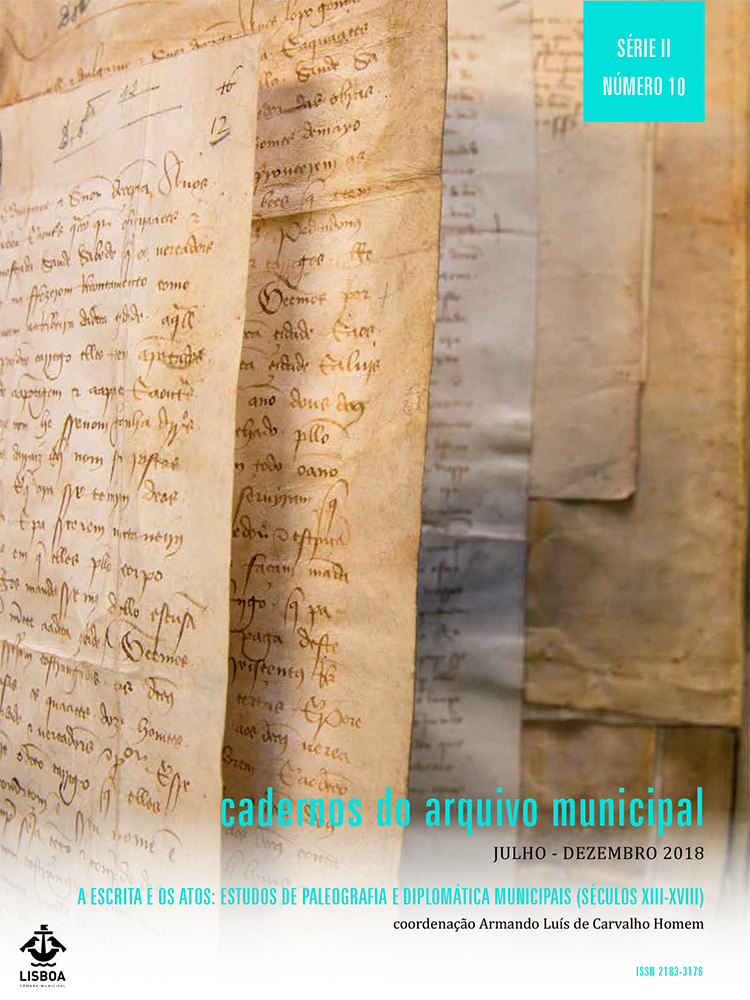Paleographic approach to the Book 1 of bail bonds of slaves (1549-1556): exercise of graphic analysis
DOI:
https://doi.org/10.48751/CAM-2018-10137Keywords:
Paleography, Gothic writing, Paleographic environment, Cursive writing, Graphic modesAbstract
This article focuses on the coexistence of different types of writing in the same graphic environment, at the end of the cycle of the gothic canon, in the middle of the 16th century. In this sense, through a case study, are analyzed the graphical modalities used by the various clerks who, integrating a municipal bureaucratic structure under the tutelage of the Lisbon City council clerk, produced the “Book 1 of bail bonds of slaves”, where were registered the guarantors of the ships owners that were accompanied by slaves. Despite the existing graphic conservatism, in which the Gothic pattern prevails, the disorganized relative multigraphism, in several more or less speedy cursive variants in the cursive Manueline line, as well as the presence of new graphic forms foretell the arrival of a new writing canon.
Downloads
Downloads
Published
How to Cite
Issue
Section
License
Copyright (c) 2018 Jorge Ferreira Paulo

This work is licensed under a Creative Commons Attribution-NonCommercial 4.0 International License.
The authors retain copyright and grant the journal the right of first publication, with the work simultaneously licensed under the Creative Commons Attribution License CC BY-NC 4.0 which allows sharing and adapting the text as long as its authorship is correctly attribbuted with recognition of the initial publication in this journal.









